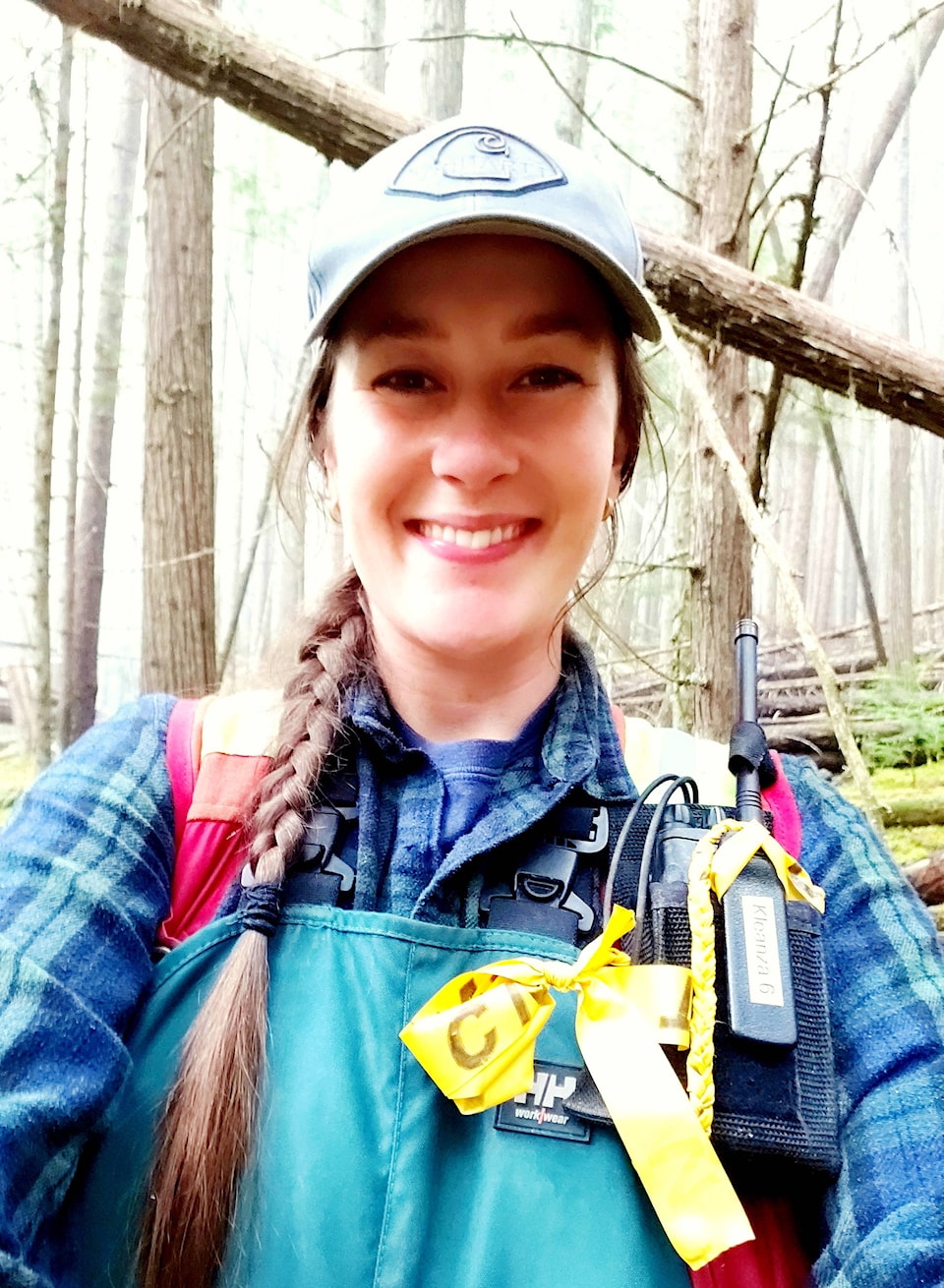Suzy Carruthers says her job doesn’t feel like work. As a consultant in cultural resource management with Kleanza Consulting Ltd. based in Terrace, she does archaeology for industry and local communities.
Her work can take her to far-flung locations and off the beaten track on lands that have been earmarked for future development, and also closer to home, collaborating on projects with local First Nations.
“I like that it’s different every day and sometimes it is so stressful because it comes as forms of curveballs and fastballs that are getting pitched to you either by clients or just in the practicality of doing the job,” she said.
“I like that it gets me outside, I spend a lot of time working which involves walking through the woods with my friends.”
Carruthers, 32, came to Terrace around two years ago from the Lower Mainland, which is where she got her start in B.C. archaeology. Having grown up just outside of Chiliwack, she attended both the University of the Fraser Valley (UFV) and Simon Fraser University (SFU).
She started out in geology with a mix of English classes, but was swayed towards a joint major in anthropology and archaeology after she took an introductory anthropology class as an elective.
“I got hooked up with the one and only archaeology professor at UFV at the time and he put me on a couple special projects which got my hands into it as well as my brain and I was just in love from there, I kinda just boded my time until I could transfer to SFU,” she said.
During her university years, Carruthers took some time off and traveled alone, solidifying her love of ancient history, people and cultures.
“I ticked off a bunch of big, I mean what archaeologists would consider like Mecca-type trips, I went to Egypt, I went to Peru, I did central America.”
Carruthers’ travels didn’t end there. During a field school split between Fiji and Tonga, she analyzed shellfish species in cultural shell deposits and worked to bring access to computers to Indigenous youth in the Fijian highlands. She spearheaded a fundraiser that resulted in a computer lab with printers and other technology.
“In talking with some of the chiefs of these highland villages, that was one of the things that they said that they noticed and were sad about a lot of their students is that despite being bright and proficient in mathematics, and language and all these sorts of things, a stumbling block was that they didn’t have accessibility to modern digital technologies,” she said.
“Everything is expected to be on a computer these days so its kinda hard if you get a scholarship to go to a university because you are aces at math but you don’t know how to use Google, that seemed like such a crazy concept to me.”
After graduation, Carruthers said that she applied to work for Kleanza each field season she wasn’t already doing archaeology work. Part of the reason was because the business had an office in Terrace. She said that the archaeology community is so small, she was already good friends with people that worked at Kleanza.
Eventually Carruthers was hired, first splitting time between the Vancouver and Terrace offices before moving to Terrace permanently.
“It was like coming home,” she said. “I fell in love almost immediately.”
“I did my time living in cities and all that during university and decided that it wasn’t for me, I much prefer a slower pace.”
Carruthers said that her interests within the field of archaeology are always changing, and she wants to get more involved with conservation and a curatorial focus. One of her dreams has been to become an underwater archaeologist. She said when she started out as a fledgling archaeologist, there were only five people doing the job in the entire country and it seemed unattainable.
“When I first got into it I went and I talked to my academic advisor and I was like ‘I want to be an underwater archaeologist,’ and she was kinda like ‘there there’ which was probably realistic at the time but our discipline is changing and moving at such a fast pace now.”
“We are getting a lot of very sexy, good and cool new technology like we’ve got all sorts of depth sounding technology and marine [remotely operated vehicles] with cameras.”
She said that with changing sea levels over time, there is an abundance of potential for underwater archaeology in a place like B.C., and working in that field feels like something that is becoming more and more possible for her.
“A lot of our oldest sites are on the coastal archipelago islands and we suspect that there are much older ones that we just haven’t found yet, so that’s kinda like the Holy Grail of northwest coast archaeology is finding the oldest site on the northwest coast.”
And despite her travels and experience in locations around the world, plus the fact that sites abroad played a big part in cementing her love for archaeology, Carruthers has no plans of working elsewhere any time soon.
“I just have such a soft spot for B.C. archaeology, its kinda like doing work for the home team.”
@BenBogstie
ben.bogstie@terracestandard.com
Like us on Facebook and follow us on Twitter.
